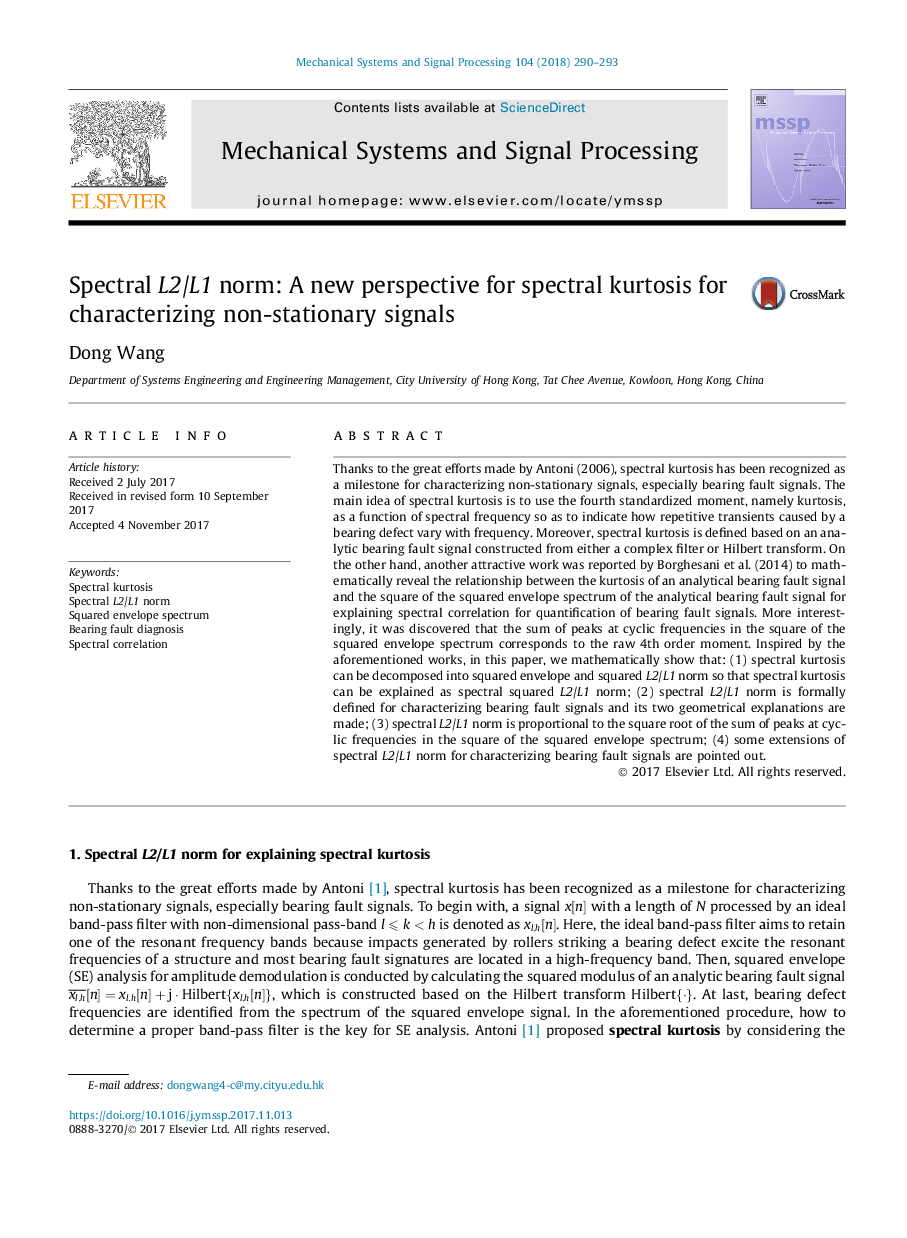| Article ID | Journal | Published Year | Pages | File Type |
|---|---|---|---|---|
| 6954564 | Mechanical Systems and Signal Processing | 2018 | 4 Pages |
Abstract
Thanks to the great efforts made by Antoni (2006), spectral kurtosis has been recognized as a milestone for characterizing non-stationary signals, especially bearing fault signals. The main idea of spectral kurtosis is to use the fourth standardized moment, namely kurtosis, as a function of spectral frequency so as to indicate how repetitive transients caused by a bearing defect vary with frequency. Moreover, spectral kurtosis is defined based on an analytic bearing fault signal constructed from either a complex filter or Hilbert transform. On the other hand, another attractive work was reported by Borghesani et al. (2014) to mathematically reveal the relationship between the kurtosis of an analytical bearing fault signal and the square of the squared envelope spectrum of the analytical bearing fault signal for explaining spectral correlation for quantification of bearing fault signals. More interestingly, it was discovered that the sum of peaks at cyclic frequencies in the square of the squared envelope spectrum corresponds to the raw 4th order moment. Inspired by the aforementioned works, in this paper, we mathematically show that: (1) spectral kurtosis can be decomposed into squared envelope and squared L2/L1 norm so that spectral kurtosis can be explained as spectral squared L2/L1 norm; (2) spectral L2/L1 norm is formally defined for characterizing bearing fault signals and its two geometrical explanations are made; (3) spectral L2/L1 norm is proportional to the square root of the sum of peaks at cyclic frequencies in the square of the squared envelope spectrum; (4) some extensions of spectral L2/L1 norm for characterizing bearing fault signals are pointed out.
Related Topics
Physical Sciences and Engineering
Computer Science
Signal Processing
Authors
Dong Wang,
